Phlebia tremellosa (Schrad.) Nakasone & Burds. - Jelly Rot
Phylum: Basidiomycota - Class: Agaricomycetes - Order: Polyporales (insertae sedis) - Family: Meruliaceae
Distribution - Taxonomic History - Etymology - Identification - Culinary Notes - Reference Sources
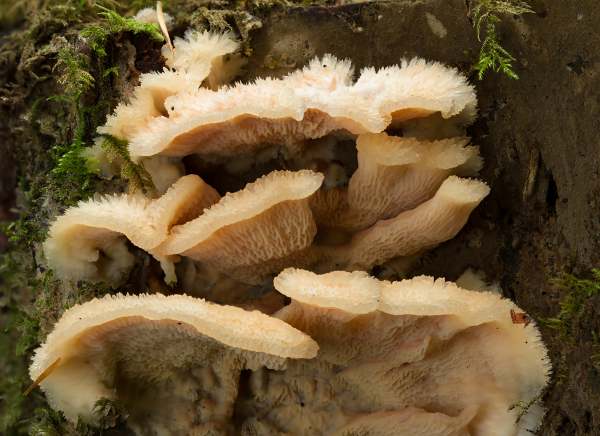
A wood-rotting crust fungus of fallen trunks and branches from deciduous hardwoods and occasionally conifers, this attractive species produces its spores on the wrinkled outer surface (which becomes the underside of reflexed upper edges). Jelly Rot is fairly common in Britain and Ireland.
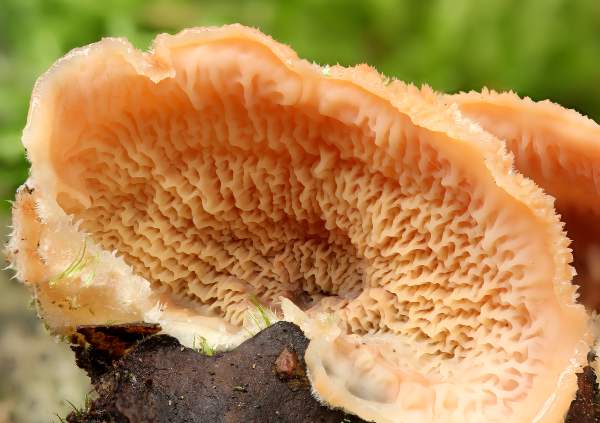
The specimen shown above is fully mature and has reflexed away from the substrate to form ear-like fruitbodies.
Distribution
Jelly Rot fungus is found throughout Britain and Ireland as well as in many parts of mainland Europe and North America.
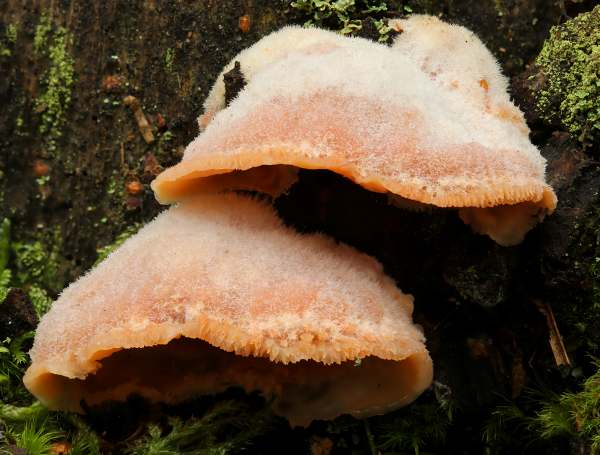
Taxonomic history
In 1794 the German botanist and mycologist Heinrich Adolf Schrader described this wood-roting fungus, giving it the binomial scientific name Merulius tremellosus. The currently-accepted scientific name Phlebia tremellosa dates from a 1984 publication by American mycologist Karen Nakasone and Harold H. Burdsall.
Synonyms of Phlebia radiata include Merulius tremellosus Schrad., Xylomyzon tremellosum (Schrad.) Pers., and Merulius spongiosus (Fr.) Mussat.
Etymology
Phlebia, the genus name, comes from the Greek phleps, phleb- meaning, or pertaining to, veins. The specific epithet tremellosa means trembling and is a reference to the jelly-like structure of mature reflexed fruitbodies, which wobble it they are touched.
Identification guide
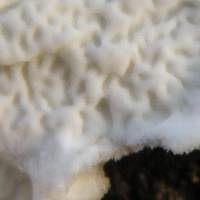 |
FruitbodyOften pale and fully resupinate when young, the fruitbodies are initially more or less circular, growing up to 10cm across and 2-5mm thick. |
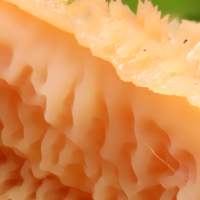 |
As they mature, the upper edges of fruitbodies become reflexed (bracket-like), and the spore-bearing surface turns pinkish orange, often paler at the margin. The upper surface of the reflexed parts of fruitbodies is paler and appears hairy. The flesh is soft and translucent. There are no true pores on the fertile surface, which is covered in complexly patterned wrinkles that are so deep that they appear to enclose large irregular pore-like apertures. The basidia are four spored and clamp connections are present. Sparse short cystidia in the fertile surface are clavate and sometimes have encrusted tips. |
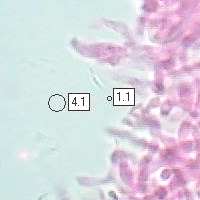 |
SporesAllantoid (sausage shaped), smooth, 3.5-4.5 x 1-2µm; inamyloid Spore printWhite. |
Odour/taste |
Not significant. |
Habitat & Ecological role |
Saprobic on dead broadleaf trunks and fallen branches, particularly of oaks and beeches; very occasionally recorded on dead conifer timber. |
Season |
Most often seen in autumn and winter. |
Culinary Notes
This fungus is generally regarded as inedible.
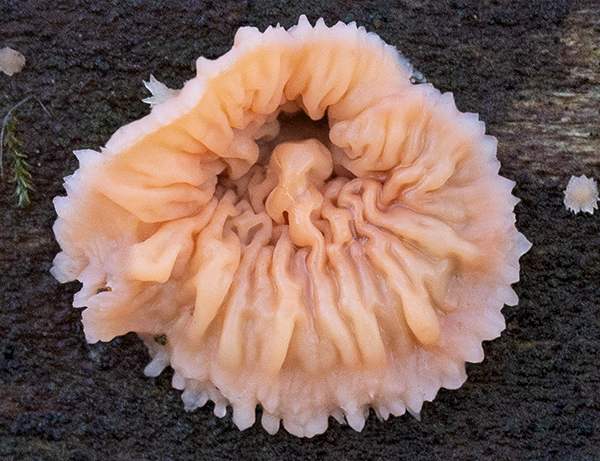
Above: Phlebia tremellosa, northern Pennsylvania USA
Reference Sources
John Eriksson, Kurt Hjortstam and Leif Ryvarden (1981) The Corticiaceae of North Europe, Volume 6; Fungiflora, Oslo, Norway.
Fascinated by Fungi, 2nd Edition, Pat O'Reilly 2016, reprinted by Coch-y-bonddu Books in 2022.
Dictionary of the Fungi; Paul M. Kirk, Paul F. Cannon, David W. Minter and J. A. Stalpers; CABI, 2008
Taxonomic history and synonym information on these pages is drawn from many sources but in particular from the British Mycological Society's GB Checklist of Fungi and (for basidiomycetes) from Kew's Checklist of the British & Irish Basidiomycota.
Acknowledgements
This page includes pictures kindly contributed by Simon Harding, David Kelly and Timothy Lyons.
Fascinated by Fungi. Back by popular demand, Pat O'Reilly's best-selling 450-page hardback book is available now. The latest second edition was republished with a sparkling new cover design in September 2022 by Coch-y-Bonddu Books. Full details and copies are available from the publisher's online bookshop...

